How Poppy Northcutt cracked NASA’s boys’ club and became a feminist icon
While NASA was busy making history by getting men ever closer to the moon, a quieter revolution was taking place in its Mission Control’s Planning and Analysis room. There, in a sea of slide rules and Y chromosomes, sat Francis “Poppy” Northcutt, NASA’s first female Mission Control engineer.
Starting in 1965, Northcutt conducted trajectory analysis for Apollo missions 8-17, from the first crewed mission to leave Earth’s orbit through the final moonwalk. It was her team’s computer program and calculations that helped bring the Apollo 13 astronauts home from lunar orbit after their service module exploded, earning her a Presidential Medal of Freedom Team Award. And when Apollo 17 landed on the moon, it came to rest near Crater Poppy, named in her honor.
“We had this incredible audacity that we could do this, that we could go to the moon and bring people back from there,” says Northcutt. “It’s astounding, especially with how little togetherness we had on this planet at that time. Yet we put together this amazing array of people across the world, working on this one thing, really focused, taking big chances. The risks were tremendous.”
Her combination of intelligence, Texas swagger and charm, and a dash of unconventionality made her a global media darling and feminist role model—a position that would gain momentum over time. Today, at 75, she’s an attorney and women’s rights activist, serving as president of both the Houston and Texas chapters of the National Organization for Women (NOW). She’s the subject of a play in development, Sizzle Sizzle Fly, commissioned by the Alfred P. Sloan Foundation. And this month, she’s featured in the National Geographic documentary Apollo: Missions to the Moon and PBS/American Experience docuseries Chasing the Moon, which respectively premiere July 7 and 8—two of the myriad programs, books, conferences, exhibitions, and films honoring the 50th anniversary of the Apollo 11 moon landing on July 20, 1969.
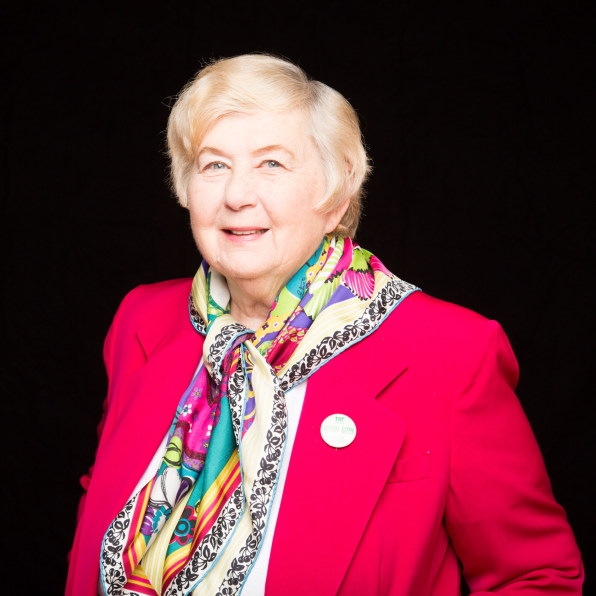
[Photo: National Geographic/Stewart Volland]
Half a century on, Northcutt regrets that the U.S. has no moon colony and relies on Russian spacecraft to transport crew to the International Space Station. “I hope that . . . people, as they look at this achievement, will understand that we can do great things,” she says. “We have so much more technological capability now walking around in our phones than we had available at that time, and we can do a whole lot more with them than take selfies.”
As an advocate for technology, women’s equality, and STEM education, Northcutt is also disappointed by the ongoing gender imbalance in the engineering field. “The percentage of women doing computers has dropped instead of increased, which is really sad,” she says. “In the ’60s, women were about 30%—partly because it was considered a more menial job then—but now it’s more like 18%,” she says. “There have been a lot of reports about very hostile workplaces for women in some of those fields. The kind of harassment that we experienced in the ’60s was nothing compared to the way you can have some of this targeted harassment on social media.”
Using her spotlight
When press interest in Apollo 8 surged in 1968, Northcutt was a NASA publicity dream. Both the space race and the women’s rights movement were heating up. And here was this charismatic 25-year-old blond engineer who could spew out calculations like the boys and hold her own in front of the press—especially against the inevitable questions: “How does it feel to work in a world that is dominated by men?” “Are the men jealous of you?” And the particularly cringeworthy, “How much attention do the men in Mission Control pay to a pretty girl in miniskirts?”
“Well, I think the first time a girl comes in . . . they pay quite a lot of attention, but after awhile they become a little more accustomed to you and pay more attention to the consoles,” she parries demurely in Chasing the Moon, redirecting the message back to her job.
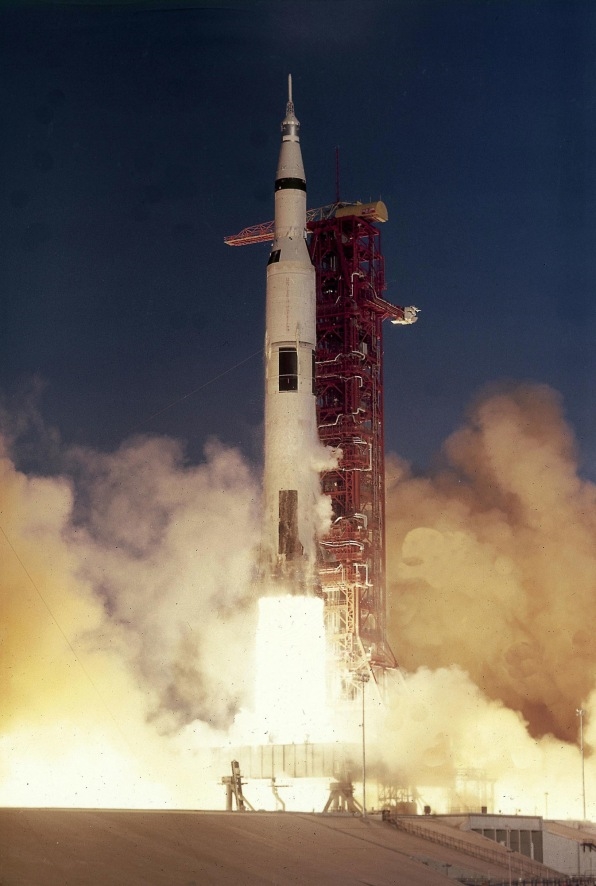
[Photo: NASA]
Northcutt drew interviews and fan mail from around the world. “[NASA] didn’t have any women astronauts, so suddenly I got all this press, because I was an oddity,” she says. “Getting this media spotlight was a privilege, because it was a protection. I felt like I could push for other women and not be afraid, because I had a microphone, and other women didn’t. You’re a lot more subject to abuse if you’re invisible than if you’re visible. I thought, ‘Am I going to be a victim of this or exploit this as a benefit? I have an opportunity, I should use this.’”
She elaborates in the PBS series, “I thought it was important that people understand that women could do these jobs, going into science, going into technology, doing something that’s not stereotypical.”
It was a hard-won platform, requiring a level of social calculation to rival her mathematical skills, and requiring her to work just as long as her male counterparts for far less pay to get a seat at the table. (Fellow trailblazer Joann Morgan, the only woman in the Launch Control Center firing room at the Kennedy Space Center during the Apollo 11 liftoff and an interviewee in CNN Films’ Apollo 11 documentary, endured obscene phone calls and harassment during her NASA tenure.)
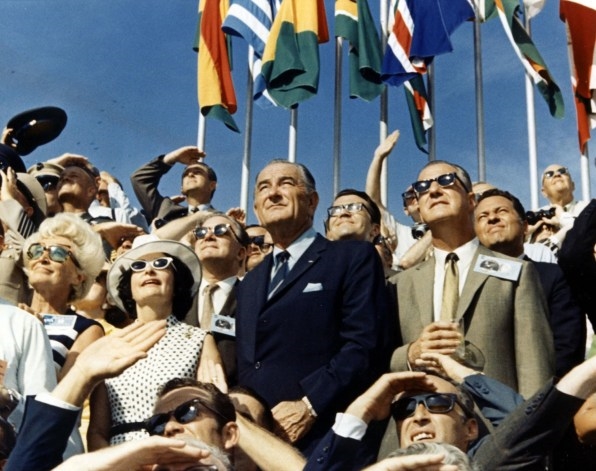
[Photo: NASA]
“We existed in a sea of sexism,” says Northcutt. “But that process was part of what enlightened my future. I became more and more aware of that sexism, especially being cast into the public light.”
Entrée to space
Northcutt joined NASA aerospace contractor TRW in 1965, fresh from a degree in mathematics from the University of Texas at Austin as a “computress”—a term used at the time for women who performed computations. Later that year, TRW promoted her to engineer with its Return to Earth task force to help design the computer program and flight trajectories that could safely return manned spacecraft from lunar orbit to Earth. (The computers in this post-Hidden Figures era were primitive by today’s standards: a Univac and a complex of IBM computers that took up rooms and utilized vacuum tubes.) When NASA accelerated the Apollo 8 schedule, Northcutt transferred with the rest of that task force to its Mission Control to teach that program to mission flight controllers and make real-time calculations and course corrections in the event of unexpected incidents mid-mission.
“I had no expectation that I would ever be over there. We went into the Mission Control Center sort of by accident, to assist on Apollo 8,” she says. “We were initially called the Abort Program, but they changed our name to Return to Earth, because they did not want to suggest that we might need to abort, although our program ended up being used for that” during Apollo 13.
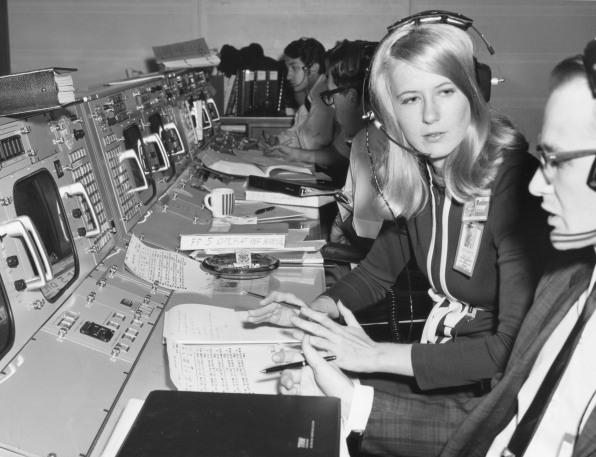
oppy Northcutt speaks with a NASA colleague in 1969.
[Photo: TRW/PhotoQuest/Getty Images]
“Getting back to the Earth from the vicinity of the moon is orders of magnitudes harder than returning from an Earth’s orbit, because you’re dealing with the gravitational effects of the Earth, moon, and the spacecraft,” she adds. “If you’re coming back from Earth’s orbit, all you have to really do is slow down and you’ll come back to Earth. But a small miscalculation at the moon becomes a giant miscalculation Earth-side. You just can’t come back to the Earth from certain points. The precision you have to operate at is so much higher. The stress levels were definitely high.”
Northcutt worked in the first room down the hall from the iconic semicircular operations control room that appeared on television, so her area often doubled as a nearby private spot to plan media messaging or for anxious engineers to decompress. “Because they knew they were on camera to a public feed, they always tried to keep their cool,” she says. “If they were really nervous, they would come to our room and pace.”
Same hours, less pay
Apparently, it was easier to put a man on the moon than create gender pay parity in the work force. Unlike their male counterparts, who were paid salaries and overtime, “computresses” were hourly workers, capped at nine hours a day, or 54 hours a week. “But if I wanted to be part of this project and treated like a peer of these guys I’m working with, I had to be able to work the way they worked, very long hours,” says Northcutt. “The other women in my position all left at 6 p.m., not 10 p.m., and didn’t come in weekends, and they did not get promoted. The guys did, and I was there with them. I got promoted because the people I worked with thought I was one of them, because I was carrying the same burden as they were. I just wasn’t being rewarded the way they were. So they became allies in my getting promoted.”
Even her promotion to engineer vexed the system. “The pay raise was so high, they didn’t have the mechanism to approve that, and I was still being underpaid,” she says. “The operations manager said he was going to make sure to schedule the highest possible raise as frequently as he could to try to get equity. But you never can get equity when you start out so behind like that. That’s the thing about the pay gap. When income is based on your past pay, and your past pay was discriminatory, you never solve the complete discrimination problem. So even if I got caught up, I would still never get caught up, when you consider things like retirement benefits.
“But I was still very privileged,” she adds. “I was in the top 1% women and the top 3% of male wage earners at the time. Most women were earning 53 cents on the dollar.”
Front seat to a revolution
While helping men return from the moon, Northcutt helped advance women back on Earth. At TRW, she served on the company’s affirmative action committee and worked to improve its pregnancy leave policy. In the early 1970s, she served on NOW’s national board of directors, organizing demonstrations and strikes, and giving speeches. In 1975, the Houston mayor named her the first women’s advocate for the city, a position that enabled her to help pass laws improving women’s status, letting women join the police and fire departments, and disallowing hospitals from charging women for rape kits.
“I was watching what was happening with the women’s rights movement overall,” she says. “In 1970, I took a day off from work to go to my first demonstration. I didn’t demonstrate in college during the Vietnam War. I majored in beer drinking and campus politics. I went to the first Women’s Strike for Equality where I found other feminists, became very active in the women’s movement, and more conscious of discriminatory laws and how protective legislations could improve the status of women.”
After a year’s stint as a Merrill Lynch stockbroker, she joined the TRW Controls division and attended law school at night. Earning her law degree in 1984 from the University of Houston Law Center, she served the first felony prosecutor in the domestic violence unit of the Texas Appellate Court before becoming a defense attorney.
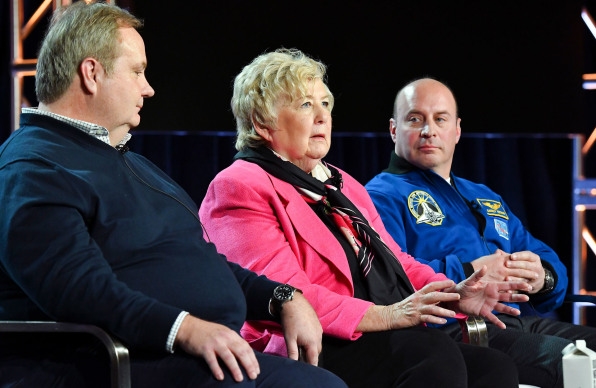
[Photo: Vince Bucci/National Geographic/PictureGroup]
Still, the boundary-pushing rocket scientist was never far away. Northcutt tells a story from her prosecutorial days with the same gleam in her eye honed by deflecting patronizing questions from male reporters during her NASA days.
“I was always very good at asking questions of technical witnesses,” she says. “It has to do with the way you think and process information. When I was working in the space program, I was always trying to figure out ways to push the limits of this computer program, because it has to produce something that is flyable and reliable all the time. So you want to find every place that it’s going to break.”
The same applied to legal interrogations, as in the case of one a lab chemist testifying against Northcutt’s client on drug charges. “I don’t really know anything about chemistry, but I know about testing limits and software,” she says, laughing as she recalled requesting the drug test kit manual. “It was still shrink-wrapped! I asked how they could correctly follow procedure and store their drug testing kits when they’d never opened their operating manual. How could he guarantee their testing was accurate? I had him on the witness stand for a long time. He was sweating like crazy.”
Nowadays, Northcutt uses that same creative focus to provide legal services for pregnant teens, as well as to educate young voters and women from immigrant communities about the need for their political participation. “To a large extent, the laws have changed, but it’s not the legal barriers themselves, it’s the environment,” she says. “There are so many places in society that sexism still permeates. And then of course, we have the sexist-in-chief in the White House. Women just have to get mad enough to challenge them. We have made incredible leaps in many ways, but there’s still a long way to go.”
(46)

